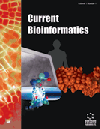-
s Analysis of Germin-like Protein Genes (OsGLPs) Family in Rice Using Various In silicoApproaches
- Source: Current Bioinformatics, Volume 15, Issue 1, Jan 2020, p. 17 - 33
-
- 01 Jan 2020
Abstract
Background: Germin-like Proteins (GLPs) play an important role in various stresses. Rice contains 43 GLPs, among which many remain functionally unexplored. The computational analysis will provide significant insight into their function. Objective: To find various structural properties, functional importance, phylogeny and expression pattern of all OsGLPs using various bioinformatics tools. Methods: Physiochemical properties, sub-cellular localization, domain composition, Nglycosylation and Phosphorylation sites, and 3D structural models of the OsGLPs were predicted using various bioinformatics tools. Functional analysis was carried out with the Search Tool for the Retrieval of Interacting Genes/Proteins (STRING) and Blast2GO servers. The expression profile of the OsGLPs was predicted by retrieving the data for expression values from tissuespecific and hormonal stressed array libraries of RiceXPro. Their phylogenetic relationship was computed using Molecular and Evolutionary Genetic Analysis (MEGA6) tool. Results: Most of the OsGLPs are stable in the cellular environment with a prominent expression in the extracellular region (57%) and plasma membrane (33%). Besides, 3 basic cupin domains, 7 more were reported, among which NTTNKVGSNVTLINV, FLLAALLALASWQAI, and MASSSF were common to 99% of the sequences, related to bacterial pathogenicity, peroxidase activity, and peptide signal activity, respectively. Structurally, OsGLPs are similar but functionally they are diverse with novel enzymatic activities of oxalate decarboxylase, lyase, peroxidase, and oxidoreductase. Expression analysis revealed prominent activities in the root, endosperm, and leaves. OsGLPs were strongly expressed by abscisic acid, auxin, gibberellin, cytokinin, and brassinosteroid. Phylogenetically they showed polyphyletic origin with a narrow genetic background of 0.05%. OsGLPs of chromosome 3, 8, and 12 are functionally more important due to their defensive role against various stresses through co-expression strategy. Conclusion: The analysis will help to utilize OsGLPs in future food programs.


